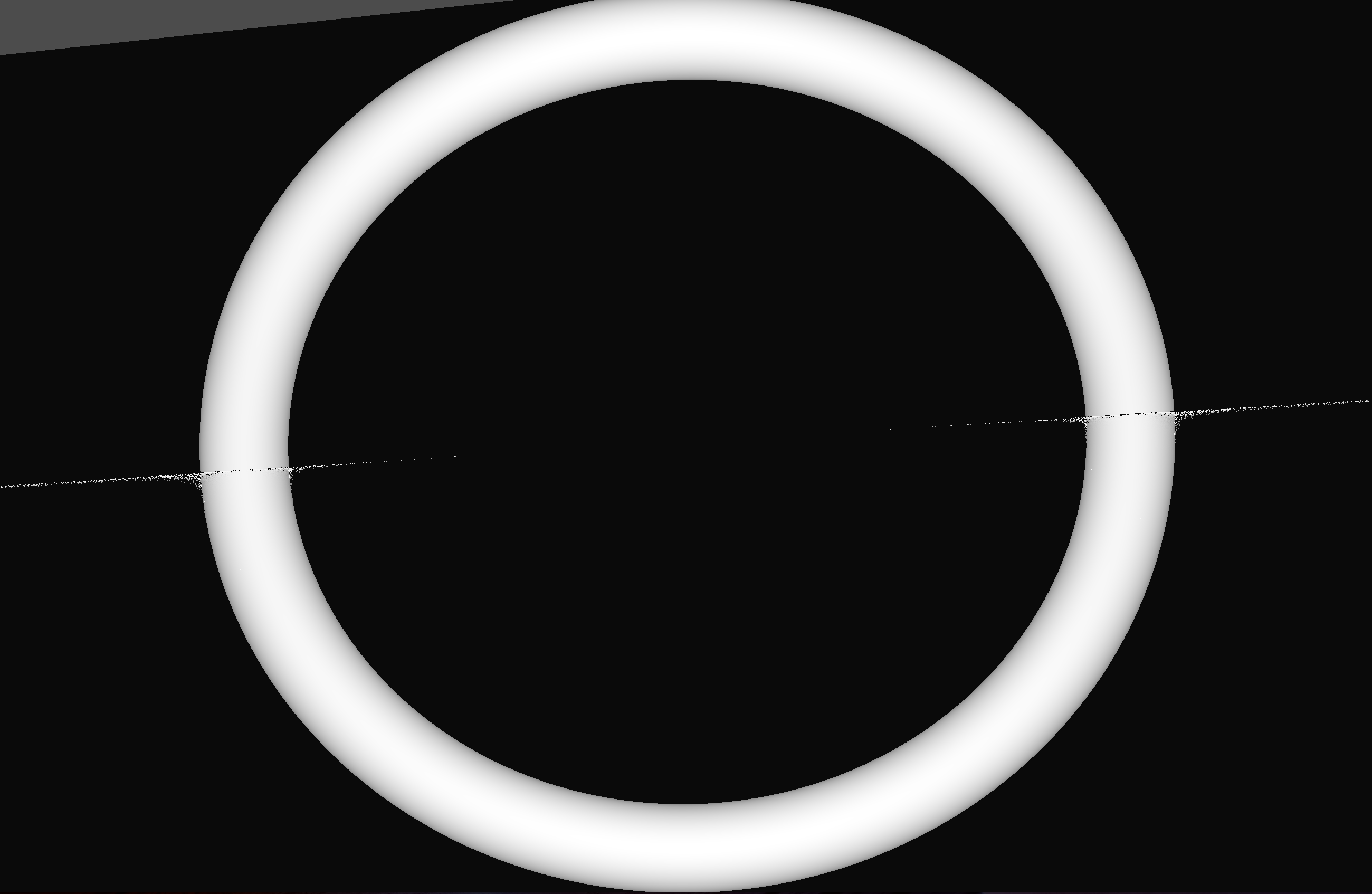Opticks : GPU Optical Photon Simulation for Particle Physics with NVIDIA OptiX
Status of Opticks : GPU Optical Photon Simulation for Particle Physics with NVIDIA® OptiX™
Simon C Blyth, IHEP — https://bitbucket.org/simoncblyth/opticks — Jan 2019, SJTU, Shanghai
Contents
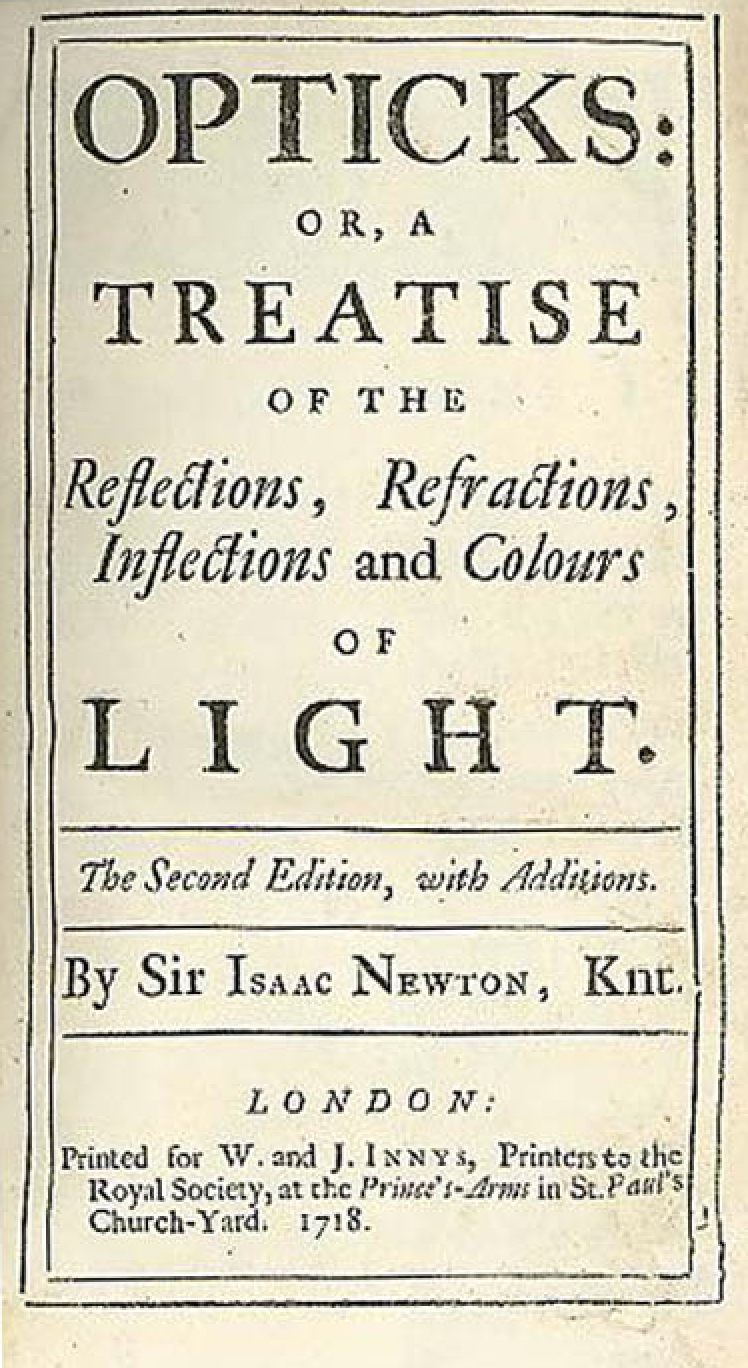
- Optical Photon Simulation Problem...
- Huge CPU Memory+Time Expense
- Ray tracing and Rasterization
- Rendering + Photon Simulation : Limited by Ray Geometry Intersection
- NVIDIA OptiX Ray Tracing Engine
- Boundary Volume Heirarchy (BVH) algorithm
- GPU Geometry starts from ray-primitive intersection
- Ray intersection with general CSG binary trees, on GPU
- Torus : much more difficult/expensive than other primitives
- CSG : (Cylinder - Torus) PMT neck : spurious intersects
- CSG : Alternative PMT neck designs
- Translate Geant4 Geometry to GPU, Without Approximation
- Translate Geant4 Optical Physics to GPU (OptiX/CUDA)
- Random Aligned Validation : Direct comparison of GPU/CPU NumPy arrays
- Progress on Validation : JUNO Geometry Issues
- Progress on Ease-of-use
- Opticks : Aims to Revolutionize JUNO Muon Simulation
- Links
Optical Photon Simulation Problem...
JPMT Before Contact 2
Huge CPU Memory+Time Expense
- JUNO Muon Simulation Bottleneck
- ~99% CPU time, memory constraints
- Optical photons : naturally parallel, simple :
- produced by Cerenkov+Scintillation
- yield only Photomultiplier hits
-> Hybrid Solution : Geant4 + Opticks
Ray-tracing vs Rasterization
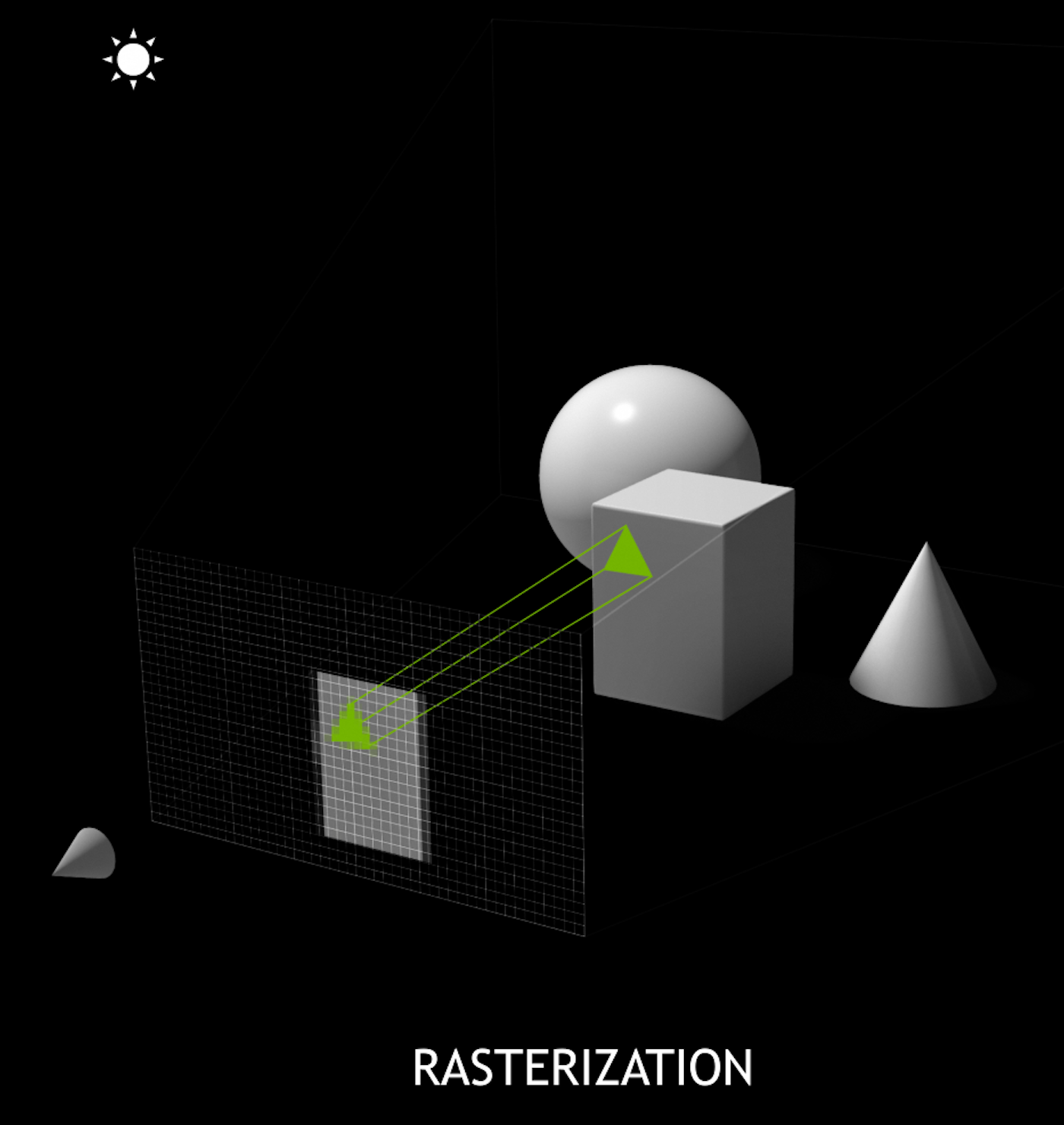
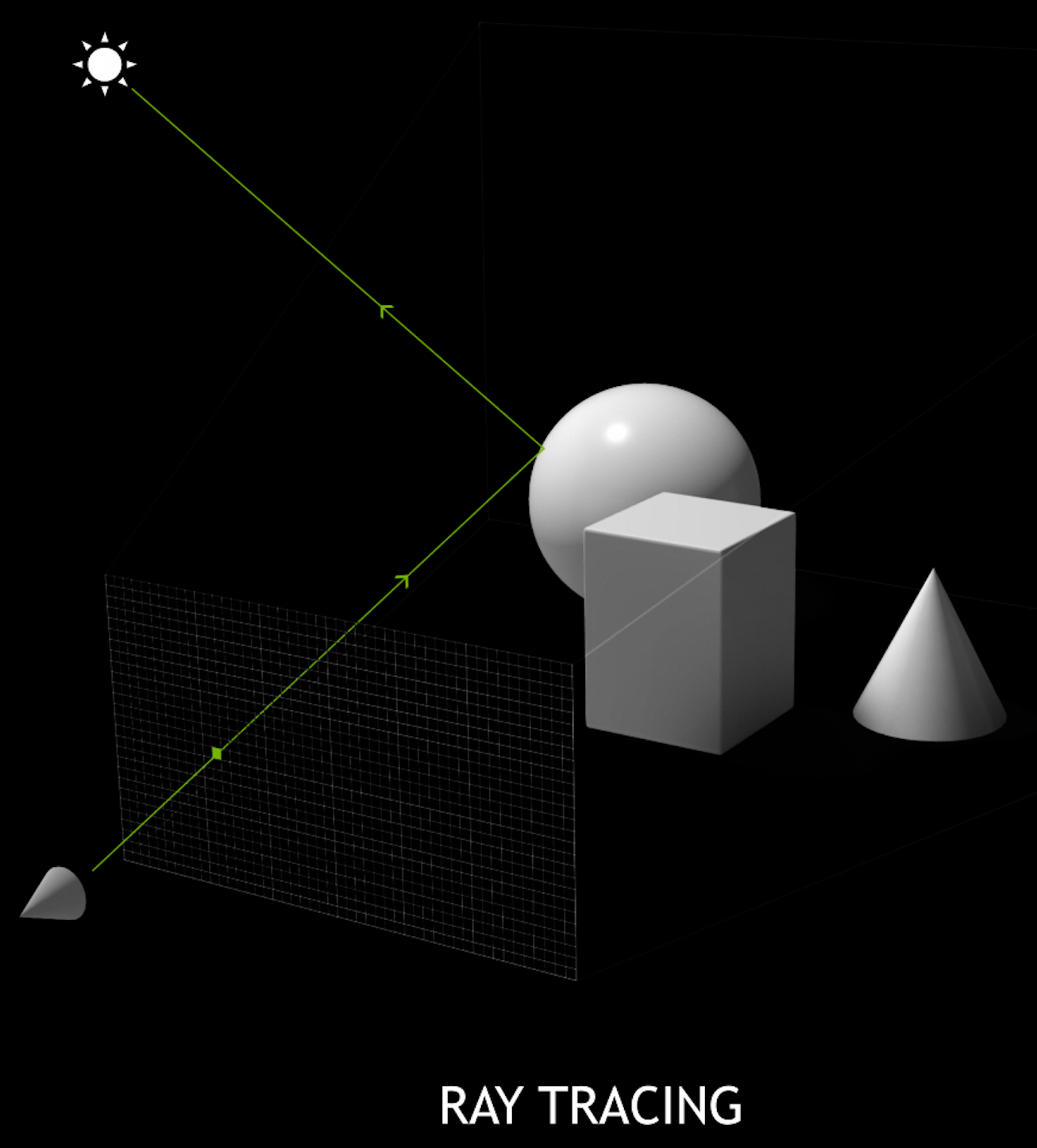
Rendering + Photon Simulation : Limited by Ray Geometry Intersection
Not a Photo, a Calculation
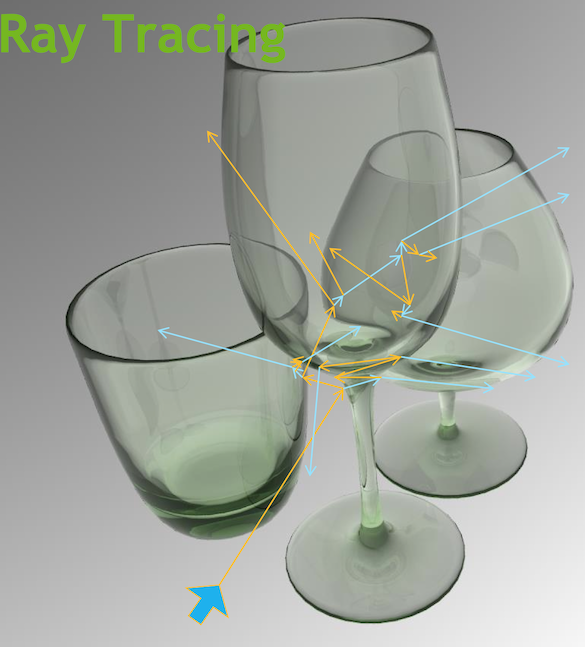
Ray Tracing Tools can Help Optical Photon Simulation
- industry continuously improving ray trace performance
- NVIDIA Turing GPU : raytrace dedicated "RT Cores"
- Up to "11 GigaRays per second" per GPU
https://nvidianews.nvidia.com/news/nvidia-reveals-the-titan-of-turing-titan-rtx
NVIDIA® OptiX™ Ray Tracing Engine -- http://developer.nvidia.com/optix
OptiX Raytracing Pipeline
Analogous to OpenGL rasterization pipeline:
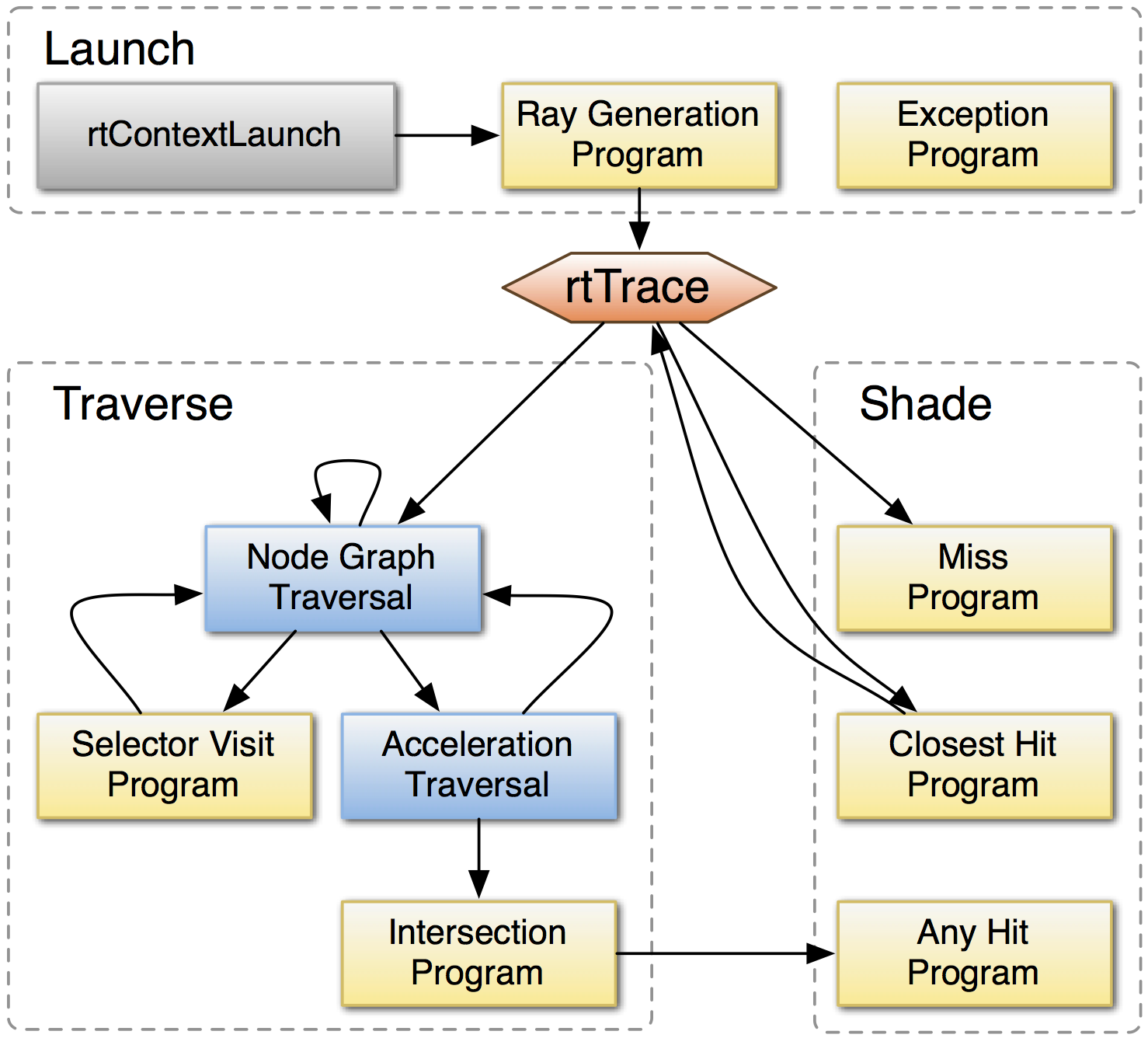
OptiX makes GPU ray tracing accessible
- accelerates ray-geometry intersections
- simple : single-ray programming model
- "...free to use within any application..."
NVIDIA expertise:
- ~linear scaling with CUDA cores across multiple GPUs
- acceleration structure creation + traversal (Blue)
- instanced sharing of geometry + acceleration structures
- compiler optimized for GPU ray tracing
- regular updates, profit from new GPU features:
- NVIDIA RTX™ with Volta, Turing GPUs
https://developer.nvidia.com/rtx
User provides (Yellow):
- ray generation
- geometry bounding box, intersects
BVH
Opticks : GPU Geometry starts from ray-primitive intersection
- 3D parametric ray : ray(x,y,z;t) = rayOrigin + t * rayDirection
- implicit equation of primitive : f(x,y,z) = 0
- -> polynomial in t , roots: t > t_min -> intersection positions + surface normals
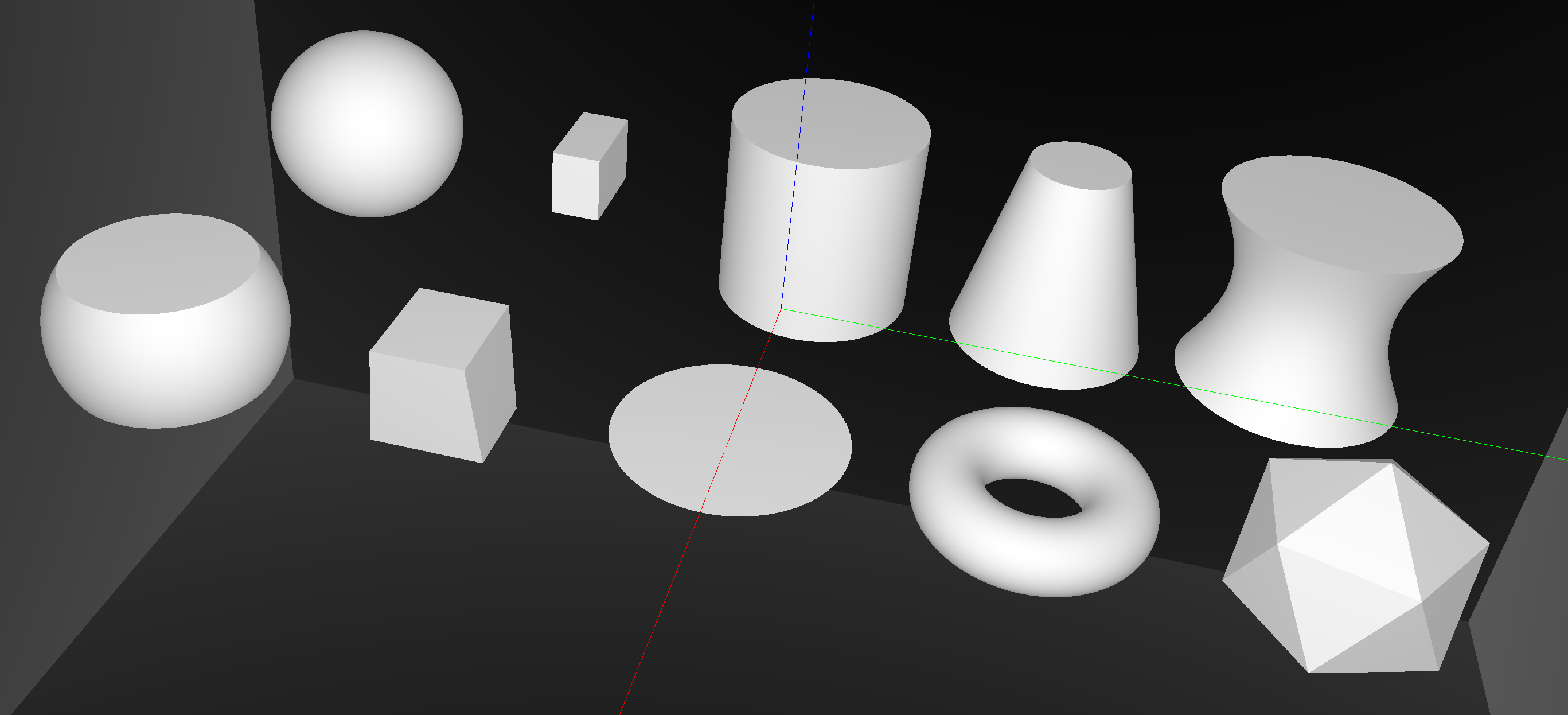
CUDA/OptiX intersection for ~10 primitives -> Exact geometry translation
Ray intersection with general CSG binary trees, on GPU
Outside/Inside Unions
dot(normal,rayDir) -> Enter/Exit
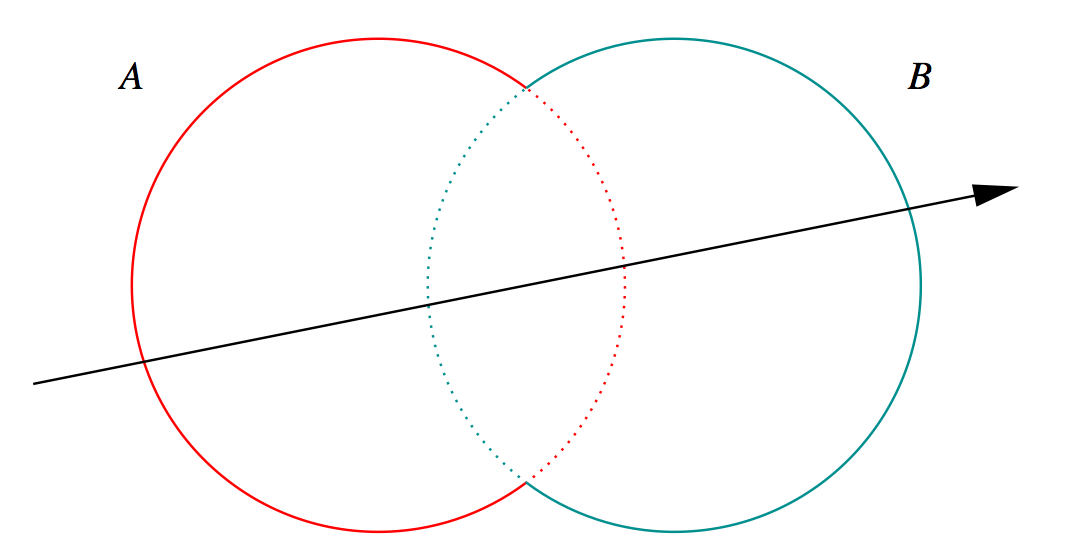

- A + B boundary not inside other
- A * B boundary inside other
Pick between pairs of nearest intersects, eg:
| UNION tA < tB | Enter B | Exit B | Miss B |
|---|---|---|---|
| Enter A | ReturnA | LoopA | ReturnA |
| Exit A | ReturnA | ReturnB | ReturnA |
| Miss A | ReturnB | ReturnB | ReturnMiss |
- Nearest hit intersect algorithm [1] avoids state
- sometimes Loop : advance t_min , re-intersect both
- classification shows if inside/outside
- Evaluative [2] implementation emulates recursion:
- recursion not allowed in OptiX intersect programs
- bit twiddle traversal of complete binary tree
- stacks of postorder slices and intersects
- Identical geometry to Geant4
- solving the same polynomials
- near perfect intersection match
- [1] Ray Tracing CSG Objects Using Single Hit Intersections, Andrew Kensler (2006)
- with corrections by author of XRT Raytracer http://xrt.wikidot.com/doc:csg
- [2] https://bitbucket.org/simoncblyth/opticks/src/tip/optixrap/cu/csg_intersect_boolean.h
- Similar to binary expression tree evaluation using postorder traverse.
Torus : much more difficult/expensive than other primitives
Torus artifacts


3D parametric ray : ray(x,y,z;t) = rayOrigin + t * rayDirection
- ray-torus intersection -> solve quartic polynomial in t
- A t^4 + B t^3 + C t^2 + D t + E = 0
Solving Quartics
- requires double precision
- very large difference between coefficients
- varying ray -> wide range of coefficients
- numerically problematic
- several mathematical approaches tried : no clear winner
- adopted approach[1] avoids artifacts in primitives, but still has issues in CSG combinations
Best Solution : avoid Torus
- avoids the expense as well as the problems
- eg model PMT neck with hyperboloid or polycone, not cylinder-torus
[1] Depressed quartic + resolvent cubic
https://bitbucket.org/simoncblyth/opticks/src/tip/optixrap/cu/csg_intersect_torus.h
https://bitbucket.org/simoncblyth/opticks/src/tip/optixrap/cu/SolveQuartic.h
Torus : different artifacts as change implementation/params/viewpoint
- Wide variety of artifacts as change viewpoint, changing quartic coefficients
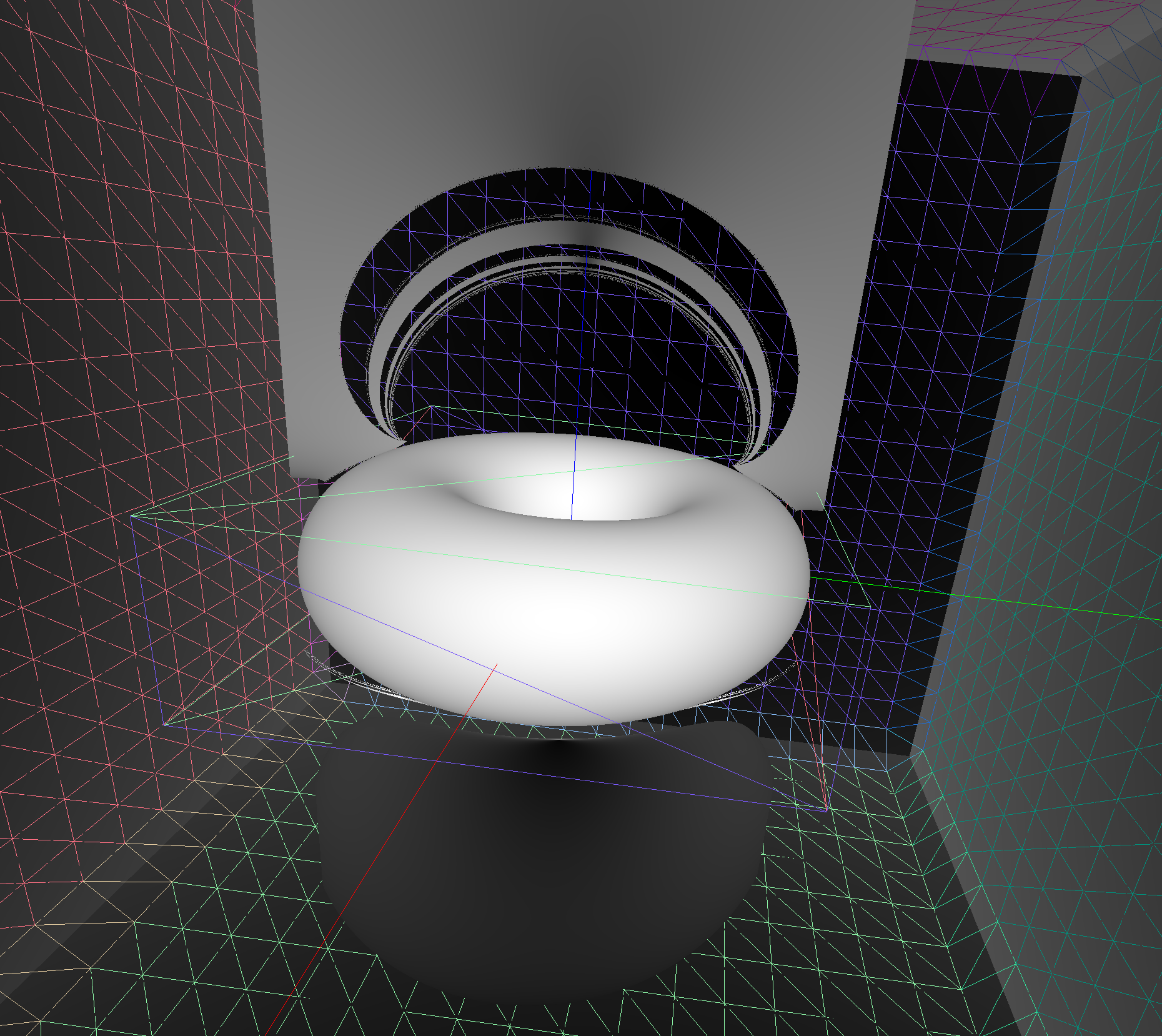
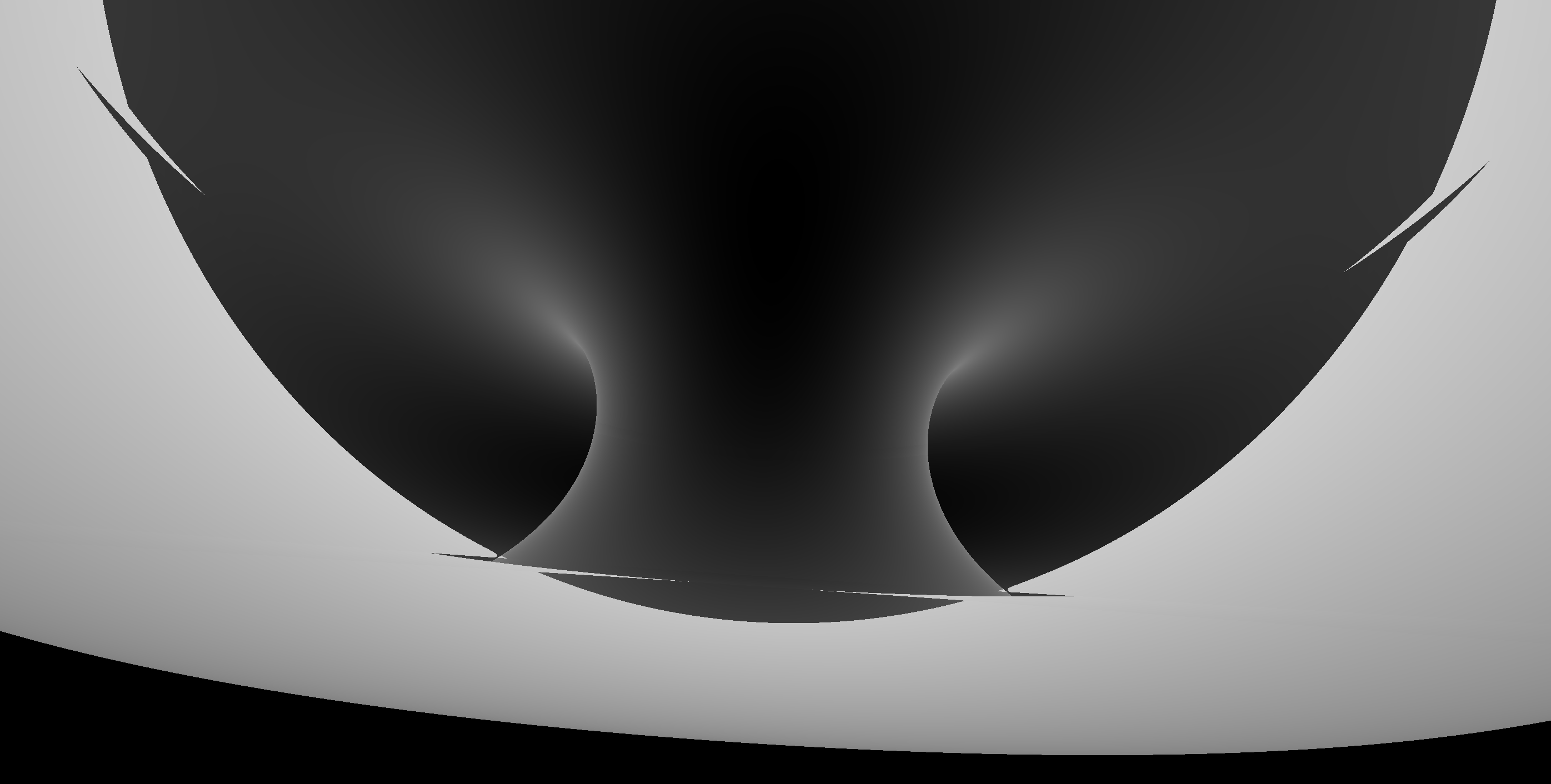
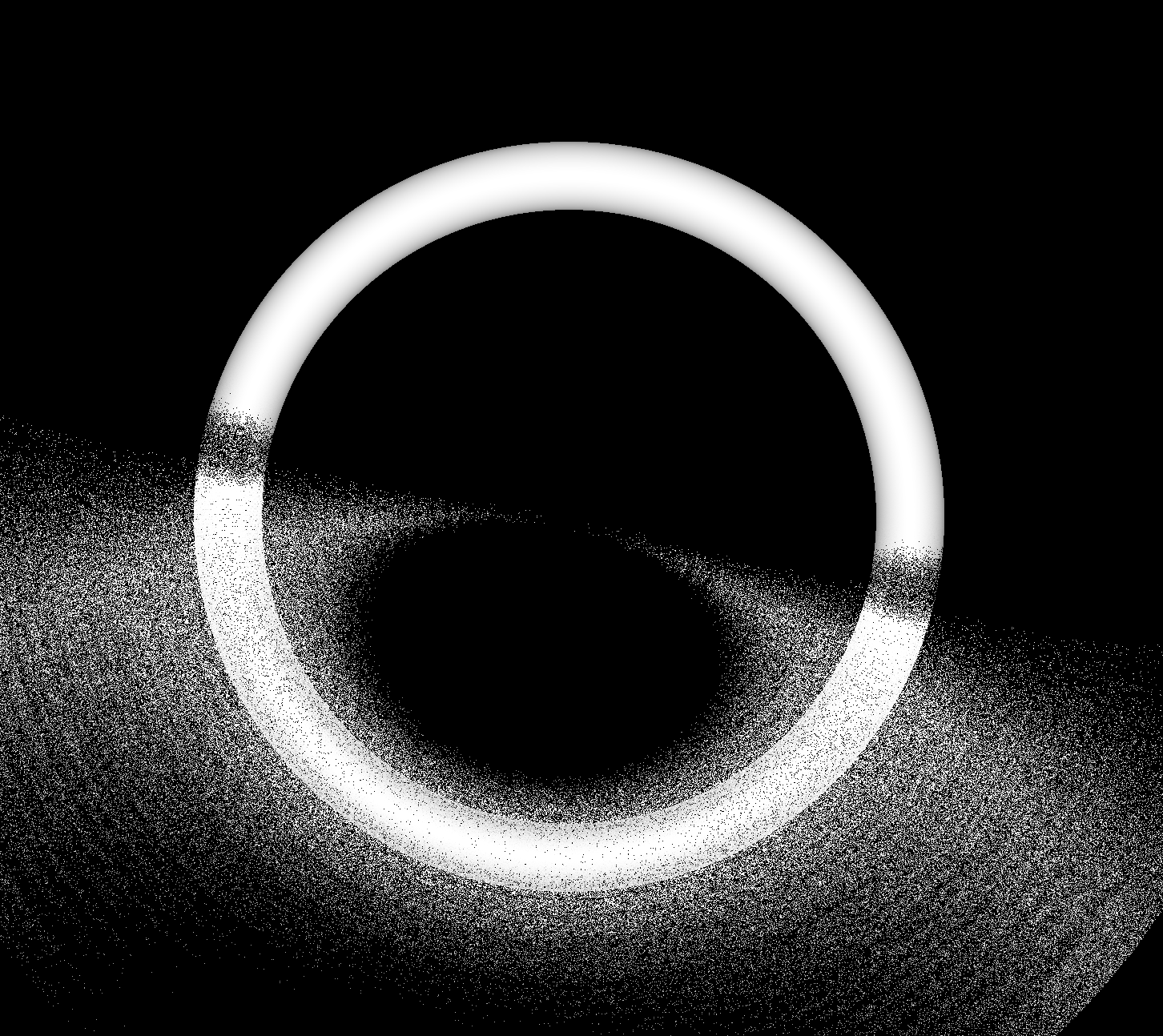
CSG : (Cylinder - Torus) PMT neck : spurious intersects

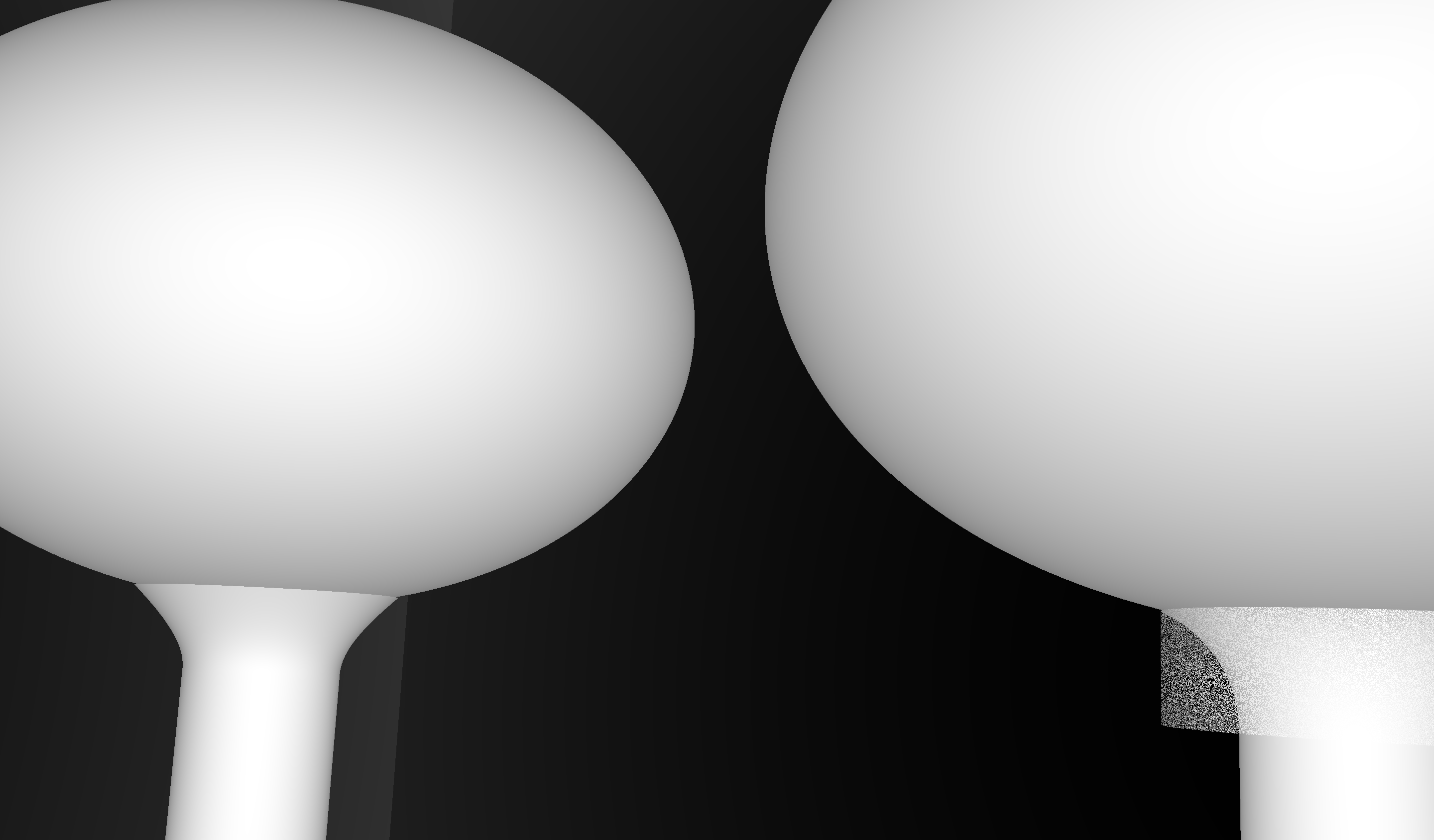
OptiX Raytrace and OpenGL rasterized wireframe comparing neck models:
- Ellipsoid + Hyperboloid + Cylinder
- Ellipsoid + (Cylinder - Torus) + Cylinder
- unfortunately Geant4 does not support z-cut hyperboloid, so use polycone ?
Best Solution : use simpler model for optically unimportant PMT neck
CSG : Alternative PMT neck designs
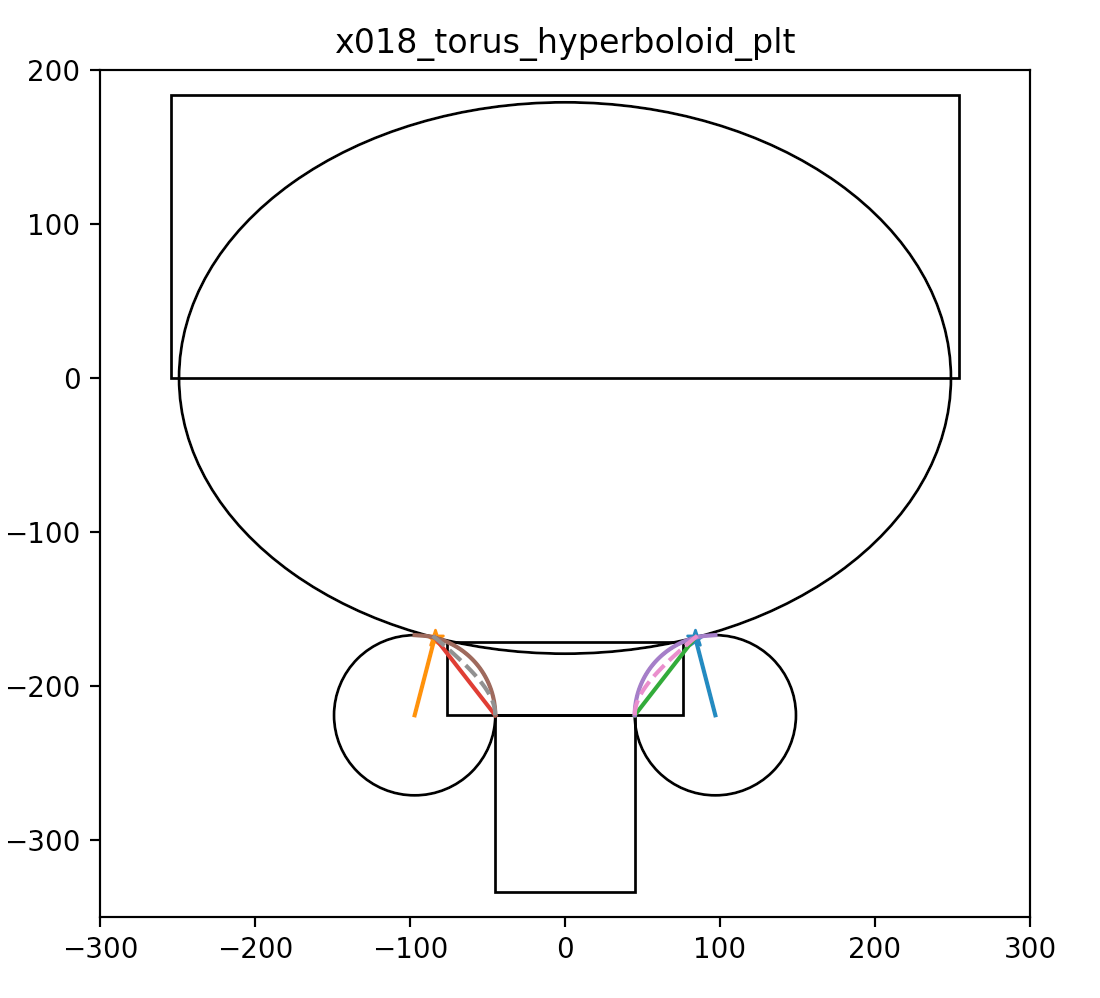

Hyperboloid and Cone defined using closest point on ellipse to center of torus circle
- Cylinder-Torus : purple line, Cone : green, simplest
- Hyperboloid : dashed magenta, works with Opticks, BUT G4Hype has no z-range flexibility
https://bitbucket.org/simoncblyth/opticks/src/tip/ana/x018_torus_hyperboloid_plt.py
j1808_top_rtx
j1808_top_ogl
Opticks : Translate Geant4 Geometry to GPU, Without Approximation
Direct Geometry Translation
- 2018: full reimplementation of translation
- automatic geo-management, simplifying usage
- unified handling of analytic and triangulated
- no separate export+import stages
- substantial reduction in Opticks code
- dependencies eliminated : Assimp, G4DAE
- G4 geometry[1] auto-translated to Opticks CSG
- geocache persisted, staleness check by digest
- Direct Geometry : Geant4 "World" -> Opticks CSG -> GPU
- much simpler : fully automated geo-management
- Material/Surface/Scintillator properties
- interpolated to standard wavelength domain
- interleaved into "boundary" texture
- "reemission" texture for wavelength generation
- Structure
- repeated geometry instances identified (progeny digests)
- instance transforms used in OptiX/OpenGL geometry
- merge CSG trees into global + instance buffers
- export meshes to glTF 2.0 for 3D visualization
- Ease of Use
- easy geometry : just handover "World"
- [1] G4 primitives used need corresponding Opticks implementations, contributions for
- any unsupported geometry are welcome
Opticks : Translate Geant4 Optical Physics to GPU (OptiX/CUDA)
GPU Resident Photons
- Seeded on GPU
- associate photons -> gensteps (via seed buffer)
- Generated on GPU, using genstep param:
- number of photons to generate
- start/end position of step
- gensteps : hybrid CPU+GPU generation
- Propagated on GPU
- Only photons hitting PMTs copied to CPU
Thrust: high level C++ access to CUDA

OptiX : single-ray programming model -> line-by-line translation
- CUDA Ports of Geant4 classes
- G4Cerenkov (only generation loop)
- G4Scintillation (only generation loop)
- G4OpAbsorption
- G4OpRayleigh
- G4OpBoundaryProcess (only a few surface types)
- Modify Cerenkov + Scintillation Processes
- collect genstep, copy to GPU for generation
- avoids copying millions of photons to GPU
- Scintillator Reemission
- fraction of bulk absorbed "reborn" within same thread
- wavelength generated by reemission texture lookup
- Opticks (OptiX/Thrust GPU interoperation)
- OptiX : upload gensteps
- Thrust : seeding, distribute genstep indices to photons
- OptiX : launch photon generation and propagation
- Thrust : pullback photons that hit PMTs
- Thrust : index photon step sequences (optional)
Random Aligned Validation : Direct comparison of GPU/CPU NumPy arrays
bi-simulation direct matching
- Align CPU/GPU Random Number Sequences
- G4 random engine providing cuRAND sequence
- "Align" CPU/GPU codes (some jumps)
- simplest possible direct comparison
- Simple geometries
- same geometry, same physics, same results
JUNO geometry : issue iteration in progress
tboolean-box simple geometry test : compare Opticks events
- 100k photons : position, time, polarization : 1.2M floats
- 34 deviations > 1e-4 (mm or ns), largest 4e-4
- deviants all involve scattering (more flops?)
In [11]: pdv = np.where(dv > 0.0001)[0]
In [12]: ab.dumpline(pdv)
0 1230 : TO BR SC BT BR BT SA
1 2413 : TO BT BT SC BT BR BR BT SA
2 9041 : TO BT SC BR BR BR BR BT SA
3 14510 : TO SC BT BR BR BT SA
4 14747 : TO BT SC BR BR BR BR BR BR BR
5 14747 : TO BT SC BR BR BR BR BR BR BR
...
In [20]: ab.b.ox[pdv,0] In [21]: ab.a.ox[pdv,0]
Out[20]: Out[21]:
A()sliced A()sliced
A([ [-191.6262, -240.3634, 450. , 5.566 ], A([ [-191.626 , -240.3634, 450. , 5.566 ],
[ 185.7708, -133.8457, 450. , 7.3141], [ 185.7708, -133.8456, 450. , 7.3141],
[-450. , -104.4142, 311.143 , 9.0581], [-450. , -104.4142, 311.1431, 9.0581],
[ 83.6955, 208.9171, -450. , 5.6188], [ 83.6954, 208.9172, -450. , 5.6188],
[ 32.8972, 150. , 24.9922, 7.6757], [ 32.8973, 150. , 24.992 , 7.6757],
[ 32.8972, 150. , 24.9922, 7.6757], [ 32.8973, 150. , 24.992 , 7.6757],
[ 450. , -186.7449, 310.6051, 5.0707], [ 450. , -186.7451, 310.605 , 5.0707],
[ 299.2227, 318.1443, -450. , 4.8717], [ 299.2229, 318.144 , -450. , 4.8717],
...
Opticks : Progress on Validation : JUNO geometry issues
Dual pro/dev bi-simulation
- production executable
- Opticks embedded inside Geant4 app, with minimal G4Opticks API
- development executable
- Geant4 embedded inside Opticks, steals geocache + gensteps from production, does fully instrumented propagations
- best-of-both-worlds
- same bi-propagations duplicated in production + development environments
5/40 JUNO solids with CSG translation issues
- PMT_20inch_body/pmt_solid
use of "cylinder - torus"
- causes spurious intersects
- fix : polycone neck
- z-cut hyperboloid not supported by Geant4
- PMT_20inch_inner1/2_solid
uses depth 4 tree (31 nodes) where 1 primitive sufficient
- profligate modelling
- fix : z-cut ellipsoid cathode
- sAirTT
box subtract a cylinder with coincident face
- fix : grow subtracted cylinder to avoid coincidence
Next step : make these geometry changes then proceed to next issue
Opticks : Progress on Ease-of-Use
Aim of Geant4+Opticks Examples
- exposure to Opticks for all Geant4 users
- quickstart for Geant4 + Opticks learning / evaluation
- demonstrate utility of scintillation + Cerenkov gensteps to Geant4 members
Geant4 + Opticks History
- 2014 : 19th Geant4 Collaboration Meeting, Okinawa
- proto-Opticks (G4DAE) presented
- 2017 : 22nd Geant4 Collaboration Meeting, Australia
- presented Opticks (CSG on GPU) to plenary session, discussions on how Opticks might be integrated with Geant4, conclude on an advanced example as initial target
- 2018 : 23rd CHEP Conference, Bulgaria
discussions with Geant4 EM/Optical coordinator reach agreement on high level structure of example
- primary concern from Geant4 members is that ongoing support for the examples will be provided
Ease-of-use was focus of 2018 developments
- Direct Geometry Translation -> automated geometry management
- Modern CMake with BCM[1] -> automated configuration
- G4Opticks API -> simple embedding of Opticks within G4 apps
[1] Boost CMake 3.5+ modules : configure direct dependencies only https://github.com/BoostCMake/cmake_modules https://github.com/simoncblyth/bcm
Opticks[1] : Aims to Revolutionize JUNO Muon Simulation
100 GeV muon, millions of photons
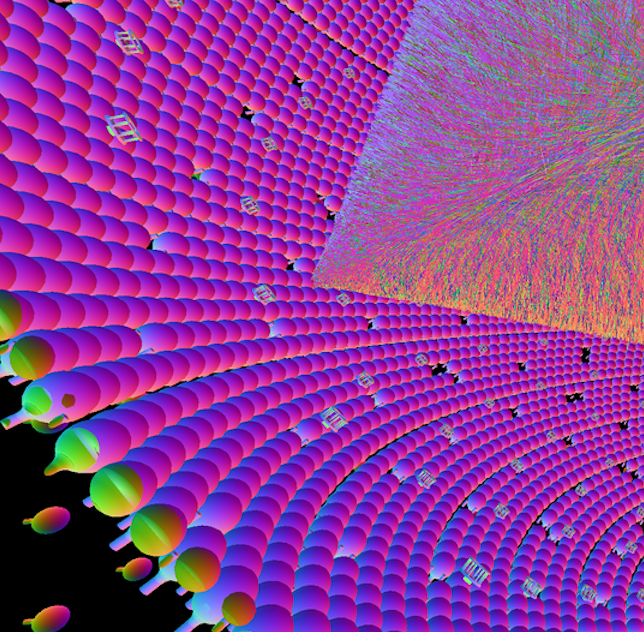
State-of-the-art GPU ray tracing[2] applied to optical simulation
- replaces Geant4 optical simulation with GPU equivalent
- translate G4 geometry to GPU without approximation[3]
- port G4 optical physics to CUDA[4]
Optical photons generated+propagated entirely on GPU
- only photons hitting PMTs require CPU memory
- optical photon CPU memory --> ~zero
- muon workload perfect for GPUs, Opticks > 1000x Geant4
- optical photon CPU time --> ~zero
Status : validation iteration ongoing
- validation by direct comparison of random sequence aligned GPU and CPU simulations
- minor PMT geometry simplifications needed to proceed to next iteration
[1] Open source project http://bitbucket.org/simoncblyth/opticks
[2] NVIDIA OptiX ray tracing engine
[3] using innovative Constructive Solid Geometry implementation on GPU
[4] scattering, boundary, reemission, absorption
Opticks Links
- https://simoncblyth.bitbucket.io
- Opticks presentations and videos
- https://juno.ihep.ac.cn/cgi-bin/Dev_DocDB/ShowDocument?docid=3927
- Opticks visualization screen capture movie of JUNO
- https://groups.io/g/opticks
- Opticks mailing list archive
- opticks+subscribe@groups.io
- send email to this address, to subscribe
- https://simoncblyth.bitbucket.io/opticks/index.html
- Opticks installation instructions
- https://bitbucket.org/simoncblyth/opticks
- Opticks code repository
